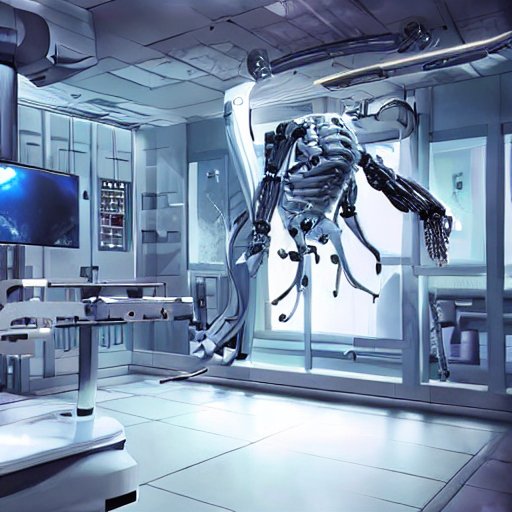In 2021 3D scanning market was worth 7.4 billion USD and is expected to grow at a CAGR of 15.2% during 2022-2028, reaching global market volume of about 10-13 billion USD by 2028. With financial statistics being so reassuring, we’ll try to foresee 3D-scanning trends and touch upon the main drivers of the market. But before we get to forecasting, let’s discuss what benefits 3D scanners have brought to industries in general?
-
Increased productivity. 3D scanning technologies enhance the workflow and save time in many fields: product design, prototyping, testing and development. For example, the International Journal of Cognitive Computing in Engineering in the article “Exploring the potential of 3D scanning in Industry 4.0: An overview” states, that in some cases the design cycle costs can be reduced by 75%. 3D scanners also help measure complex objects at higher speed and precision.
-
Reduction of labor costs. 3D scanners speed up and simplify many tasks, which required a group of professionals before. They can significantly shorten production chains and reduce the number of people involved in the production of goods or services.
-
Increased quality. With the implementation of 3D scanners into process chains, it became possible to obtain higher quality of products and services. 3D-scanners can quickly digitize an object with complicated geometrical shapes; they also help produce more accurate and faster measurements so that professionals can spend their working time on more complex and high-priority tasks.
3D scanning market is expected to be heavily influenced by growing competition and emerging trends.
1. The post-pandemic world and governmental initiatives in the healthcare sector.
Medical institutions are incentivized to invest in new technologies and equipment that will set medical treatment at higher standards. 3D-scanners are becoming widespread in prosthetics and orthotics, bringing customization and comfort for patients and reducing production costs for hospitals. This trend will intensify and scanning will take an increasing share of the prosthetics and orthotics market. Orthopedics and prosthetics will be the main growth drivers of the 3D-scanning market.
We also expect 3D scanners will start to be used in other areas of medicine, for example, examination and diagnostics of patients. They can be used to make body measurements and track the patient’s recovery after the surgery… The devices can also assist medical students in their studies of the anatomy and human organs.
Widespread use of 3D scanners in the healthcare sector will force the developers to make data collection and processing simpler and more intuitive. There will also be a growing trend for all-in-one hardware and software solutions, aimed at specific medical fields.

2. Emerging trends in IoT, AR and VR, Metaverse.
Gaming industry is actively benefiting from 3D scanning as it helps to save time of highly-skilled specialists and reduce production costs. Character development is done with the help of photogrammetry. Environmental details such as rocks, bushes, street trash and etc are also mostly scans. 3D artists are elevated from monotonous work and concentrate on elaboration of the details, thus making the games more realistic.
With the development of augmented reality, 3D scanners may become even more necessary. In the video “The Metaverse and How We’ll Build It Together”, Mark Zuckerberg paved the path for the emerging technology. Metaverse will bring deep feeling of presence and natural real-life experiences. To accomplish these high goals, the technologies have to evolve enough. We expect Metaverse developers to harness the experience of the gaming industry and incorporate 3D scanning practices into the creation of the realistic environments.

3. The need for lightweight and autonomous devices.
We see a growing interest from criminalists in applying 3D scanners in their work. They enable the specialists to collect the data faster and simplify the analysis of crime scenes (a person can always open a 3D scan of a crime scene and study it as if he was there in real life). No doubt that 3D scanners increase the effectiveness of forensic studies and can even help to reduce the number of people needed for investigations.
The emerging trend will push the developers of 3D scanners to invent ways of how to make the devices more reliable in harsh environments (scanning in cold areas, or in blinding sunlight) and far away from power supplies (in the desert or jungles).

4. Artificial Intelligence and Machine Learning innovations.
AI has been actively developing for the past few years and up until recently it was more of an interest of programmers and enthusiasts. With ChatGPT by OpenAI making a fuss on social media it looks like we are entering a new era. There has been lots of talk on artificial intelligence application in art, design and programming. With this trend evolving quickly, we expect AI being applied to data collection and point cloud procession in 3D scanners.
Today, cleaning and analyzing data and assembling scans from individual parts takes considerable time and involves serious human involvement. It is essentially manual. We expect that in the next few years AI will be actively incorporated into the software that powers 3D scanners and processes scan data. All of this will help reduce human involvement, simplify the work with 3D scanners, and lower the entry threshold for new users.

